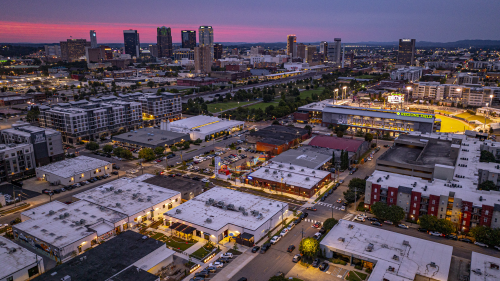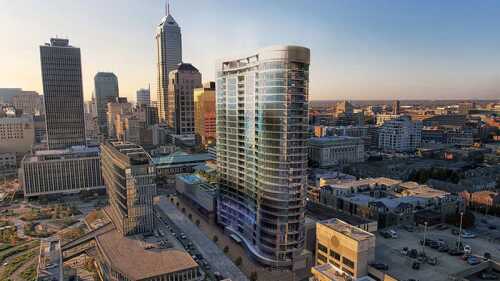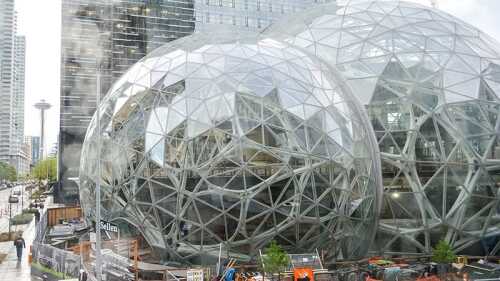Property Types
Hotels and Resorts
Ten renovation and retrofit projects make over structure to meet the needs of the contemporary hospitality industry and tap the place-specific power of older buildings.
Industrial
Standing in the shadow of Regions Field and within earshot of Railroad Park, Birmingham’s Urban Supply hints at what the next chapter of downtown life could look like. Once-quiet brick warehouses are being steadily reimagined into patios, storefronts, and gathering spaces along a new pedestrian alley. Early tenants have begun to open their doors, and programming is slowly bringing people into the district. While the project is still in its early stages, the framework is in place for a vibrant hub that will grow block by block in the years ahead.
What trends are shaping the future of the industrial sector? Four experts from ULI’s Industrial and Office Park Development Council talk about the industrial submarkets and property types that offer the greatest opportunities, challenges developers face in bringing new projects to market, ways artificial intelligence and emerging technologies are reshaping the sector, tenant priorities, and other key trends.
After a quiet first half of 2024, CMBS originations increased 59 percent in Q3 on a year-over-year basis, according to the Mortgage Bankers Association’s Quarterly Survey.
Mixed-Use
According to a newly released NAHB survey, buyers in 2013 are looking for bigger homes again, but also want energy-efficiency and plenty of storage.
Single-family housing starts are expected to rise 22 percent in 2013, according to a report from the NAHB’s convention in Las Vegas. “Housing is finally doing its job in leading the economy out of recession,” said David Crowe, NAHB’s chief economist.
An aerotropolis around Denver International Airport would build on the airport’s access to the world.
Multifamily
Implementing strategies at the building, development, and community levels can preserve functionality despite extreme weather.
The population of urban neighborhoods in many metropolitan areas is growing as quickly or nearly as quickly as that of suburban neighborhoods, reflecting ongoing consumer demand—particularly among younger households—for walkable living environments that are convenient to jobs, transit, and urban amenities, according to new research published by ULI and RCLCO.
With more than $3.6 billion in investment taking place in its downtown alone, Indianapolis has been on the radar of many out-of-state investors. At a recent ULI Indiana event, panelists described the investment appeal of secondary cities.
Office
Central Hong Kong and London’s West End topped the latest list of prime office occupancy costs, according to CBRE Research’s latest annual Global Prime Office Occupancy Costsreport. “The global top ten list reflects the ongoing strength of global gateway cities in attracting and maintaining a successful occupier base,” said Richard Barkham, global chief economist at CBRE.
As job growth in the professional services sector has increased substantially over the past several years, office real estate investment trusts (REITs) have benefited from strong leasing fundamentals. However, more office construction and oversupply concentrated in major metro areas such as New York City, Houston, and Washington, D.C., continue to concern those in the market. Plus, interest rate survey data from Trepp.
Three of the primary participants in the creation of Amazon’s headquarters in downtown Seattle came together during the 2017 ULI Spring Meeting for a discussion of the long history.
Residental
While its sustainable qualities are attracting developers and architects, so are the speed and cost-efficiency with which mass-timber buildings can be delivered to market, noted an expert panel at the recent ULI Washington Real Estate Trends conference, sometimes shaving 30 to 90 days off a construction schedule.
Real estate investment trusts that specialize in the multifamily sector, particularly those with an exposure to the high-end sector in New York City, continue to struggle in the face of new construction. Plus, interest rate survey data from Trepp.
Seattle developers are trying to keep pace with the demand for urban living with an explosion of new multifamily projects.
Retail
For decades, civic leaders have tried to revitalize Market Street, San Francisco’s central thoroughfare, only to see their efforts founder. “I sometimes call it the great white whale of San Francisco,” says Eric Tao, managing partner at L37 Development in San Francisco and co-chair of ULI San Francisco. “Every new mayor, every new planning director, every new economic development director has chased that white whale.” This year, however, an international competition of ideas hosted and run by ULI San Francisco, with support from the ULI Foundation, generated fresh momentum for reimagining the boulevard. The competition drew 173 submissions from nine countries and sparked new conversations about the future of downtown San Francisco.
The OAK project began in 2009, when a development firm set their sights on the corner of Northwest Expressway and North Pennsylvania Avenue, the state’s most important and busiest retail intersection. As the region’s only parcel capable of supporting a vertically integrated project of this scale and density, that land represented an opportunity to create something truly special.
As aging retail continue to evolve, one increasingly popular trend has been to redesign malls as town centers—recalling a time when such commercial districts were the heart and soul of a community. Mall–to–town center retrofits are emerging throughout the nation, especially in suburban communities, where pedestrian-friendly, mixed-use environments are highly attractive to millennials now raising families.











